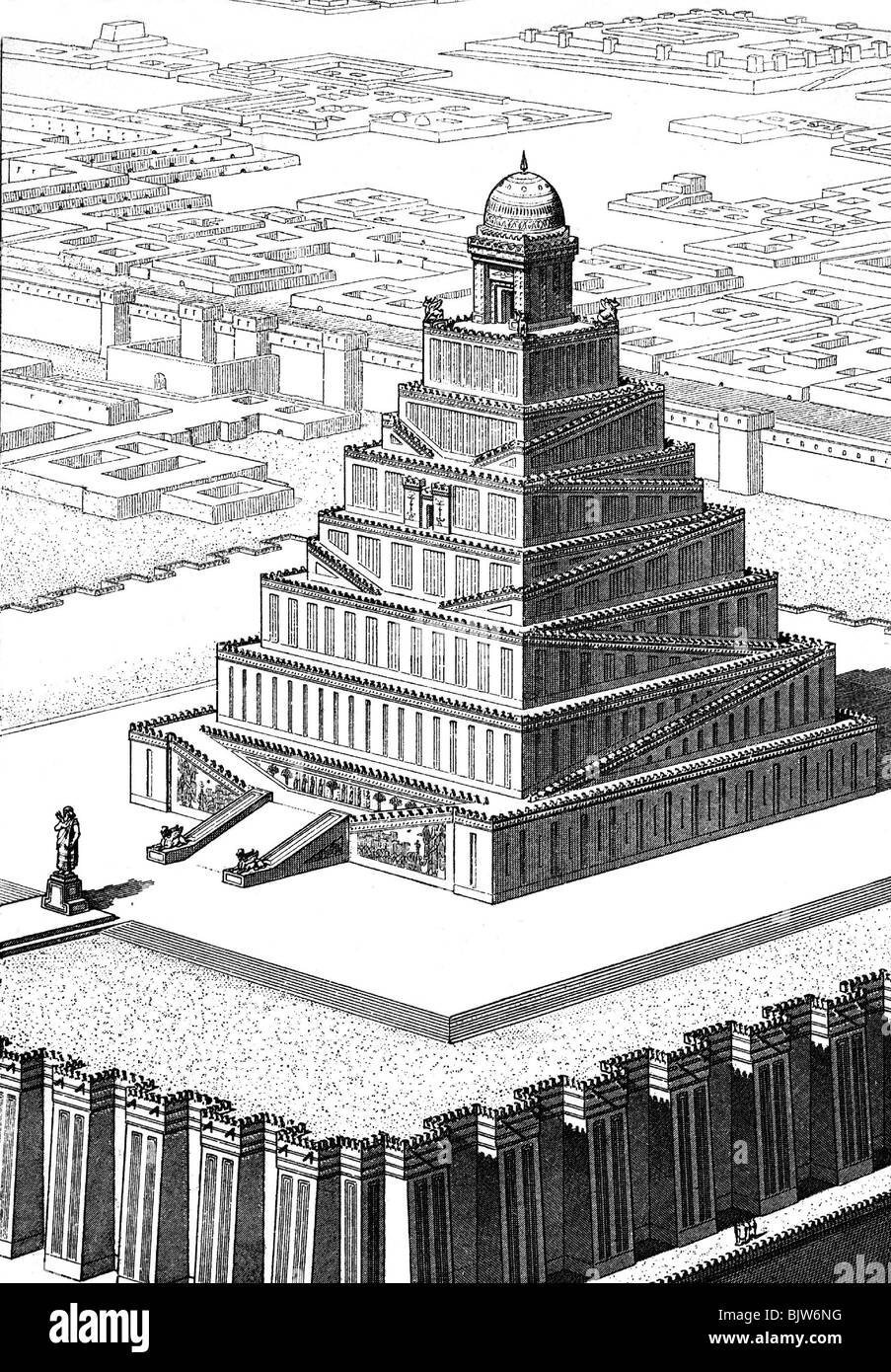
"A ziggurat is a sacred building, essentially a temple on a platform with a staircase," said Maddalena Rumor, an Ancient Near-East specialist at Case Western Reserve University in the US. They are as imposing as their Egyptian counterparts and also served religious purposes, but they differed in a few ways: ziggurats had several terraced levels as opposed to the pyramids' flat walls, they didn't have interior chambers and they had temples at the top rather than tombs inside. The very first ziggurats pre-date the Egyptian pyramids, and a few remains can still be found in modern-day Iraq and Iran. A tall chain link fence barricading the entrance and a paved parking lot were the only hints of the modern world. To get here, I'd been packed into the backseat of a taxi hurtling through the desert for hours, until I began to see the city's famed monument looming in the distance: the Ziggurat of Ur, a 4,100-year-old massive, tiered shrine lined with giant staircases. At the end of a long wooden walkway, an impressive ziggurat is nearly all that remains of the ancient Sumerian metropolis. In the shadow of the towering prison fences, Abo Ashraf, the self-proclaimed caretaker of the archaeological site, and a handful of tourists are the only signs of life for miles.

Today the ruins of the great city of Ur, once an administrative capital of Mesopotamia, now sit in a barren wasteland near Iraq's most notorious prison. In the centre is a massive tower, of one stadium in length and breadth on this tower stands another tower, and another again upon this, and so on up to eight.(This year, we published many inspiring and amazing stories that made us fall in love with the world – and this is one our favourites.)Īround 4,000 years ago, this pale, hard-packed spit of Iraqi desert was the centre of civilisation. This temple is square, and each side is two stadia in length. Most of the finds at Babylon reflect the Neo-Babylonian period and later. The rising water table has obliterated much of the sun-dried brick and other oldest material. Under the enormous heap of debris that lay over it, Esagila was rediscovered by Robert Koldewey in November 1900, but it did not begin to be seriously examined until 1910. Alexander the Great ordered restorations, and the temple continued to be maintained throughout the 2nd century BC, as one of the last strongholds of Babylonian culture, such as literacy in the cuneiform script, but as Babylon was gradually abandoned under the Parthian Empire, the temple fell into decay in the 1st century BC. 25×40 meters), and finally the central shrine, consisting of an anteroom and the inner sanctum which contained the statues of Marduk and his consort Sarpanit.Īccording to Herodotus, Xerxes had a statue removed from the Esagila when he flooded Babylon in 482 BC, desecrated the Esagila and sacked the city. 40×70 meters), containing a smaller court (ca. The Esagila complex, completed in its final form by Nebuchadnezzar II (604–562 BC) encasing earlier cores, was the center of Babylon. He claimed that he built the temple from the foundation to the battlements, a claim corroborated by dedicatory inscriptions found on the stones of the temple's walls on the site.

This Abzu was a representation of Marduk's father, Enki, who was god of the waters and lived in the Abzu that was the source of all the fresh waters.Įsarhaddon, king of the Neo-Assyrian Empire (681 – 669 BC), reconstructed the temple.

In this temple was the statue of Marduk, surrounded by cult images of the cities that had fallen under the hegemony of the Babylonian Empire from the 18th century BC there was also a little lake which was named Abzu by the Babylonian priests. It lay south of the ziggurat Etemenanki.ĭescription Clay tablet mentioning the dimensions of the Temples of Esagila and Ezida at Babylon. The Ésagila or Esangil ( Sumerian: 𒂍𒊕𒅍𒆷 É-SAǦ-ÍL.LA, " temple whose top is lofty") was a temple dedicated to Marduk, the protector god of Babylon. Eldest son of Nabopolassar, king of Babylon. Temple in Babylon, modern Iraq Reconstruction of the peribolos at Babylon, including the temple of Esagila, from The excavations at Babylon (1914)ģ2☃2′2″N 44☂5′17″E / 32.53389°N 44.42139☎ / 32.53389 44.42139īabylonian clay brick from sixth century BC cuneiform inscription "Nebuchadnezzar support Esagila temple and temple Ezida ( Borsippa).


 0 kommentar(er)
0 kommentar(er)
